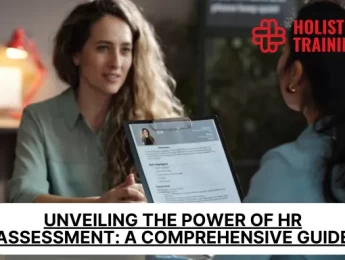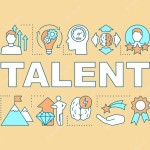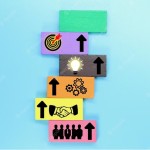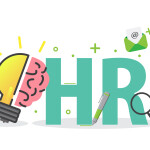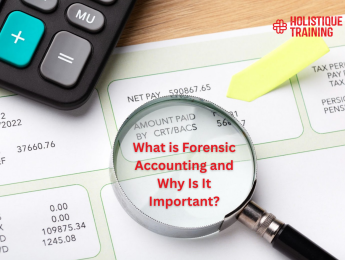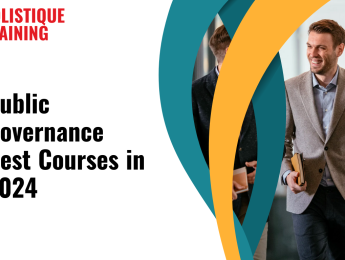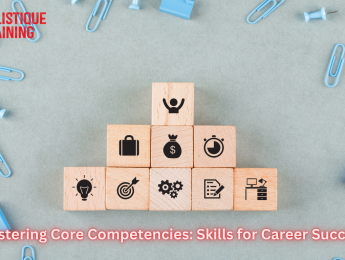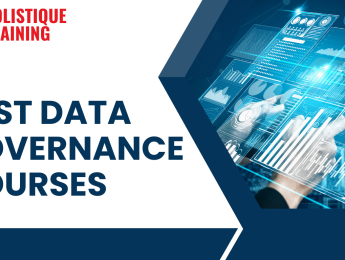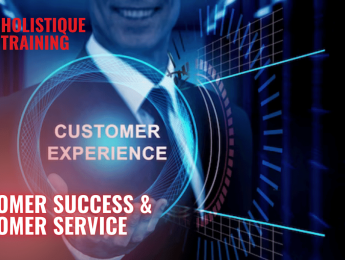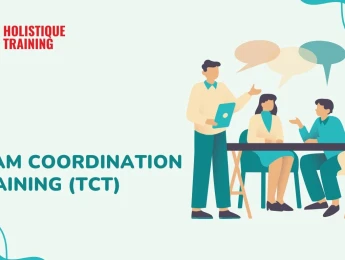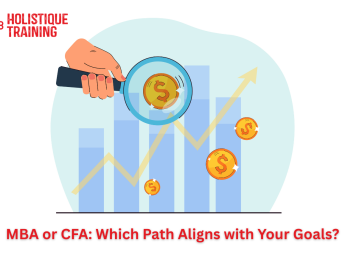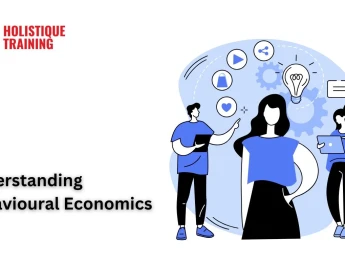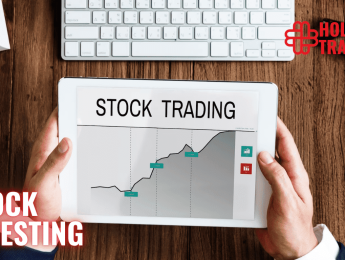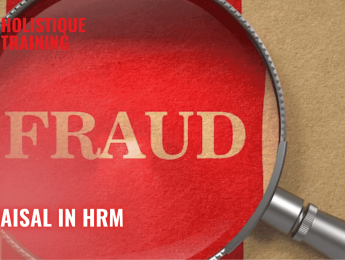- Table of Contents
- Introduction
- What Is an HR Assessment?
- HR Assessment vs. HR Audit: What’s the Difference?
- The Distinctive Nature of HR Audit
- The Holistic Approach of HR Assessment
- Finding the Right Balance
- 5 Most Used HR Assessment Methods
- 1. Employee Surveys and Feedback
- 2. Skills and Competency Assessments
- 3. HR Metrics and Analytics
- 4. Interviews and Focus Groups
- 5. Process Mapping and Workflow Analysis
- Synthesising Insights for Strategic Action
- Why Is Conducting an HR Assessment Vital?
- Identifying Improvement Areas & Enhancing Effectiveness
- Enhancing Employee Satisfaction and Engagement
- Ensuring Compliance
- Linking HR Strategies with Organisational Goals
- Fostering a Culture of Continuous Improvement
- Nurturing Organisational Capabilities
- Building a Resilient Workforce
- Step-by-step Process of an HR Assessment
- 1. Define Objectives and Scope
- 2. Gather Data
- 3. Analysis and Evaluation
- 4. Identify Opportunities and Challenges
- 5. Develop Actionable Recommendations
- 6. Implement Changes
- 7. Monitor and Evaluate
- How to Prepare for an HR Assessment
- 1. Utilise HR Software
- 2. Establish a Cross-functional Team
- 3. Create a Communication Plan
- 4. Invest in Training and Development
- 5. Embrace a Continuous Improvement Mindset
- 6. Prepare Data Collection Instruments
- 7. Align with Organisational Goals
- 8. Establish a Timeline and Milestones
- 9. Consider External Expertise
- 10. Prepare for Change Management
- Conclusion
Introduction
Embarking on a journey to optimise human resources within an organisation demands a keen understanding of its existing strengths, weaknesses, and potential areas for improvement. This is where Human Resource (HR) assessments come into play. In this deep dive, we'll unravel the essence of HR assessments, distinguish them from their auditing counterparts, explore the most utilised assessment methods, understand their vital role, dissect the step-by-step assessment process, and equip you with the tools and resources needed for a successful HR assessment.
What Is an HR Assessment?
At its core, an HR assessment is a strategic tool designed to evaluate the effectiveness and efficiency of an organisation's human resources functions. It involves a comprehensive analysis of HR policies, practices, and systems, aiming to uncover areas of improvement and capitalise on existing strengths. Unlike routine evaluations, HR assessments dig deep into the intricate web of HR processes, from recruitment and onboarding to employee development and retention.
Table 1: Metrics That Need to Be Measured in an HR Assessment
Metric | Description | Purpose |
Employee Satisfaction | Gauges overall contentment within the workforce. | Evaluates the workplace environment and morale. |
Turnover Rates | Quantifies the rate of employee turnover. | Identifies retention challenges and their impact. |
Time-to-Fill | Measures the time taken to fill job vacancies. | Assesses the efficiency of the recruitment process. |
HR Process Efficiency | Evaluates the effectiveness of HR workflows. | Pinpoints bottlenecks and streamlines operations. |
Training and Development Impact | Measures the impact of training on employee growth. | Assesses the effectiveness of skill development programs. |
HR Assessment vs. HR Audit: What’s the Difference?
In the realm of organisational management, the terms ‘assessment’ and ‘audit’ are frequently used, often interchangeably, leading to a degree of confusion. However, it's crucial to recognise the nuanced differences between an HR assessment and an HR audit, as they serve distinct purposes in evaluating and optimising human resources within an organisation.
The Distinctive Nature of HR Audit
An HR audit primarily centres on ensuring compliance with a myriad of legal, regulatory, and policy standards. Picture it as a meticulous checkup, ensuring that the organisation adheres to the established rules and guidelines governing employment practices. This involves scrutinising employment contracts, workplace policies, and documentation to guarantee alignment with local, state, and federal regulations.
The HR audit process typically encompasses:
a) Legal Compliance
Assessing whether HR practices align with employment laws and regulations, ensuring the organisation avoids legal pitfalls.
b) Policy Adherence
Scrutinising HR policies and procedures to confirm they comply with industry standards, legal requirements, and internal guidelines.
c) Documentation Accuracy
Verifying the accuracy and completeness of employee records, ensuring that documents such as job descriptions, performance evaluations, and disciplinary records are well-maintained.
d) Risk Management
Identifying potential risks related to compliance issues and proposing corrective actions to mitigate these risks.
While an HR audit is essential for maintaining legal integrity and minimising risk, it does not provide a comprehensive view of the effectiveness and efficiency of HR functions in driving organisational success.
The Holistic Approach of HR Assessment
In contrast, an HR assessment takes a more expansive and strategic approach, delving into the overall performance and impact of HR functions on the organisation. Rather than focusing solely on compliance, an HR assessment examines how HR practices contribute to the achievement of broader organisational goals.
The key elements of an HR assessment include:
a) Effectiveness and Efficiency
Assessing how well HR processes and practices contribute to the organisation's overall efficiency and effectiveness.
b) Strategic Alignment
Evaluating the alignment of HR strategies with the broader goals and objectives of the organisation, ensuring that HR initiatives support the overall mission.
c) Employee Satisfaction and Engagement
Gauging the level of satisfaction and engagement among employees to identify areas for improvement in HR practices that impact the workforce.
d) Continuous Improvement
Fostering a culture of continuous improvement within the HR department, with a focus on adapting to changing organisational needs and industry trends.
e) Optimisation of Human Capital
Going beyond compliance to maximise the potential of the workforce, identifying opportunities for skill development, talent acquisition, and employee retention.
In essence, an HR assessment is not just about ticking boxes for legal compliance; it's about strategically positioning HR as a dynamic force that propels the organisation forward.
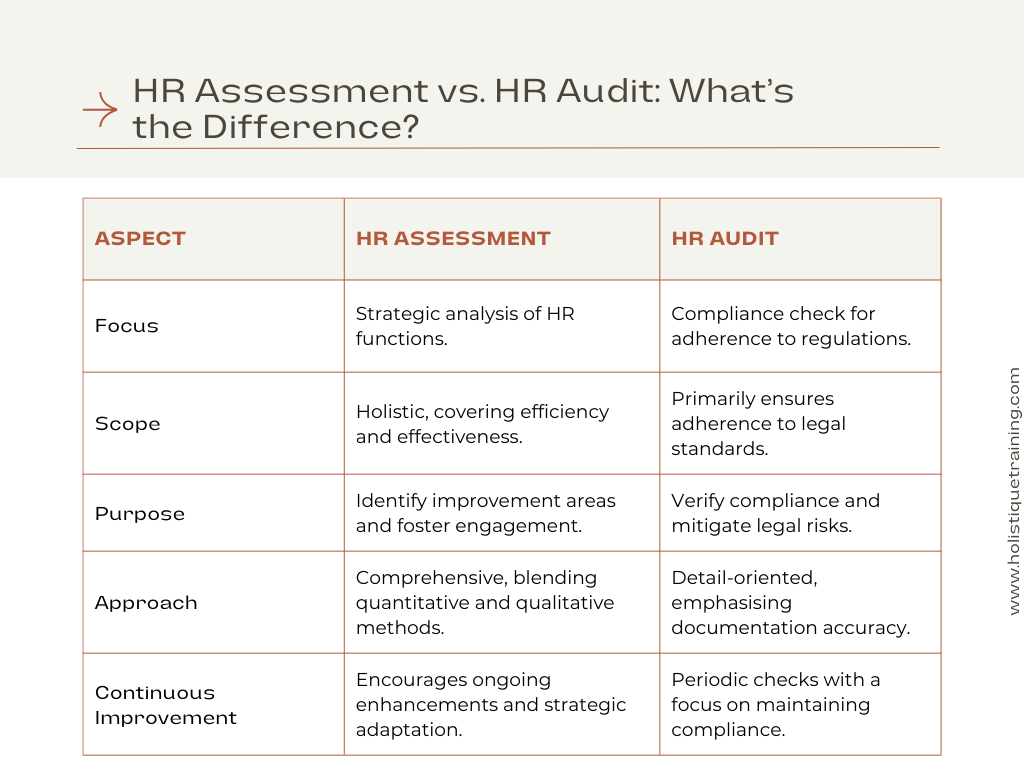
Finding the Right Balance
While HR audits and assessments have different primary objectives, they are not mutually exclusive. Organisations can benefit from a balanced approach that combines elements of both. A robust compliance foundation established through audits provides the stability necessary for an organisation to then leverage HR assessments for strategic growth and continuous improvement.
In summary, understanding the differences between HR assessments and audits is crucial for organisations aiming to foster a comprehensive approach to human resources management. An effective blend of compliance diligence and strategic assessment sets the stage for a resilient and agile HR function, capable of navigating both regulatory landscapes and the ever-evolving needs of the organisation.
5 Most Used HR Assessment Methods
Navigating the complex terrain of Human Resource (HR) management requires more than just intuition; it demands systematic evaluation and strategic planning. HR assessments, as pivotal instruments in this process, rely on various methods to comprehensively gauge the effectiveness and efficiency of an organisation's human resources functions. Let’s delve into the five most widely used HR assessment methods, each offering a unique lens through which to understand and optimise HR practices.
1. Employee Surveys and Feedback
Employee surveys stand as a cornerstone of HR assessments, providing a direct channel to the collective sentiments and perceptions of the workforce. These surveys, designed to cover diverse aspects such as job satisfaction, workplace culture, and leadership effectiveness, serve as a valuable qualitative tool. Feedback obtained through surveys not only sheds light on areas for improvement but also illuminates the aspects of HR practices that contribute positively to employee satisfaction and engagement.Statistics show that organisations that actively utilise engagement surveys to solicit feedback from their employees and take responsive actions boast an impressive 80% engagement rate, while those that neglect this practice struggle with a significantly lower rate of 40%.
To maximise the effectiveness of surveys, HR professionals often use a combination of open-ended and closed-ended questions. Open-ended questions encourage employees to express their thoughts in their own words, providing rich qualitative data. Closed-ended questions, on the other hand, facilitate quantitative analysis and allow for benchmarking against industry standards.
2. Skills and Competency Assessments
Skills and competency assessments form a pivotal method to evaluate the capabilities of the workforce. These assessments go beyond merely identifying existing skills; they delve into understanding how well employees' skills align with the organisation's current and future needs. By identifying gaps in skills and competencies, HR professionals can strategize targeted training and development programs, ensuring that the workforce remains adaptable and equipped to meet evolving challenges.
These assessments can take various forms, including self-assessment, manager assessment, and peer assessment. Leveraging a combination of methods helps create a comprehensive view of an employee's skills and competencies from different perspectives, contributing to a more accurate and holistic assessment.
3. HR Metrics and Analytics
In the age of data, HR metrics and analytics emerge as a formidable force in HR assessments. By harnessing the power of data, organisations can gain quantitative insights into various HR performance indicators. Metrics such as time-to-fill, turnover rates, and employee engagement scores offer a quantitative foundation for assessing the impact of HR practices on organisational success.
The implementation of HR analytics involves not only collecting data but also employing statistical methods and data visualisation techniques. This enables HR professionals to identify patterns, correlations, and trends, providing a deeper understanding of the dynamics between HR practices and overall organisational performance. According to Deloitte'sGlobal Human Capital Trends 2016 report, a noteworthy 77% of executives consider people analytics a top priority. Furthermore, the report reveals that 44% of surveyed companies leverage workforce data to forecast business performance. And it’s becoming even more vital throughout the years.
4. Interviews and Focus Groups
While quantitative data is valuable, the qualitative dimension brought forth by interviews and focus groups adds a human touch to HR assessments. Engaging with employees, managers, and stakeholders through structured interviews and focused discussions allows for in-depth exploration of their experiences, opinions, and suggestions.
This method provides insights into the nuances that quantitative data might miss – the human aspect of the workplace. It allows HR professionals to uncover aspects of workplace culture, leadership effectiveness, and employee experiences that may not be easily quantifiable but significantly impact organisational dynamics.
5. Process Mapping and Workflow Analysis
A holistic assessment of HR functions requires a meticulous examination of processes and workflows. Process mapping and workflow analysis involve breaking down HR processes into individual steps, identifying bottlenecks, redundancies, and areas for improvement. This method provides a visual representation of how HR functions operate and allows for the optimisation of processes to enhance efficiency.
Process mapping often involves collaboration with employees across different levels of the organisation to gain insights into how they experience and engage with HR processes. This collaborative approach not only identifies areas for improvement but also fosters a sense of ownership and engagement among employees.
Synthesising Insights for Strategic Action
The strength of HR assessments lies in the synergy of these diverse methods. By combining quantitative and qualitative approaches, organisations can paint a comprehensive picture of their HR landscape. Employee surveys unveil sentiments, skills assessments identify capabilities, metrics offer data-driven insights, interviews bring a human perspective, and process mapping optimises operational efficiency. Synthesising insights from these methods equips HR professionals with the knowledge needed to strategically align HR practices with organisational goals and foster a workplace culture conducive to growth and success.
Why Is Conducting an HR Assessment Vital?
The significance of conducting an HR assessment cannot be overstated. It serves as a compass for organisational growth and success by:
Identifying Improvement Areas & Enhancing Effectiveness
At the heart of an HR assessment lies the quest to uncover areas for improvement. By scrutinising HR policies, practices, and systems, organisations can identify inefficiencies, bottlenecks, and outdated methodologies. Whether it's streamlining recruitment processes, refining onboarding procedures, or optimising performance management systems, the assessment acts as a diagnostic tool, enabling targeted improvements for enhanced HR effectiveness.
Enhancing Employee Satisfaction and Engagement
Employee satisfaction and engagement are intrinsically linked to organisational success. An HR assessment provides a nuanced understanding of the factors influencing these crucial elements. By gauging employee sentiments through surveys and feedback mechanisms, organisations can address issues affecting morale and job satisfaction. This, in turn, leads to higher levels of engagement, improved productivity, and a positive organisational culture.
Ensuring Compliance
In a constantly evolving legal landscape, compliance with employment laws and regulations is paramount. An HR assessment includes a thorough examination of HR practices to ensure they align with local, state, and federal regulations. By identifying and rectifying compliance gaps, organisations can mitigate legal and ethical risks, safeguarding the organisation and its employees from potential legal challenges.
Linking HR Strategies with Organisational Goals
For an organisation to thrive, its HR strategies must align seamlessly with broader organisational objectives. An HR assessment provides a strategic lens, evaluating the extent to which HR initiatives contribute to the achievement of overall organisational goals. This alignment ensures that HR practices are not only effective in managing day-to-day operations but also strategic in driving the organisation's long-term success.
Fostering a Culture of Continuous Improvement
Change is a constant in today's dynamic business environment. An HR assessment, when viewed as a continuous process rather than a one-time event, instils a culture of ongoing improvement within the HR department. By regularly evaluating and adapting HR strategies, organisations can stay agile, responsive, and better equipped to navigate industry shifts, technological advancements, and changing workforce dynamics.
Nurturing Organisational Capabilities
Identifying and retaining top talent is a perennial challenge for organisations. An HR assessment delves into talent management strategies, pinpointing areas for improvement in recruitment, development, and retention processes. This proactive approach allows organisations to create a conducive environment for talent growth, ensuring that the workforce is not only skilled but also committed to the long-term success of the organisation.
Building a Resilient Workforce
In an era of rapid change and uncertainty, organisations must cultivate resilience. An HR assessment, by analysing skills and competencies, helps organisations prepare for the future. Identifying skill gaps and investing in training and development initiatives ensures that the workforce remains adaptable, capable of taking on new challenges, and contributing to the organisation's resilience in the face of evolving market demands.
In essence, an HR assessment is not merely a procedural requirement; it's a dynamic process that acts as a catalyst for organisational excellence. By embracing the insights gained from the assessment, organisations can recalibrate their HR strategies, fostering a workplace culture that values continuous improvement, employee satisfaction, and strategic alignment with organisational goals. In a landscape where the workforce is the driving force behind success, an HR assessment becomes the cornerstone of organisational prosperity and resilience.
Step-by-step Process of an HR Assessment
Conducting a comprehensive Human Resources (HR) assessment involves a systematic and strategic approach. It's not merely about collecting data but about gaining actionable insights that can drive meaningful improvements in HR functions. Here is a step-by-step guide outlining the process of an HR assessment:
1. Define Objectives and Scope
Before embarking on an HR assessment, it's crucial to define the objectives and scope of the evaluation. Clearly outline what you aim to achieve through the assessment and specify the areas of HR that will be under scrutiny. Whether it's improving employee satisfaction, enhancing recruitment processes, or ensuring legal compliance, a well-defined scope provides a roadmap for the assessment.
2. Gather Data
Once the objectives are established, initiate the data gathering process. Utilise a combination of quantitative and qualitative methods. Employee surveys, HR metrics, interviews, and documentation reviews are just a few avenues for collecting valuable data. This phase is about obtaining a comprehensive snapshot of the current state of HR within the organisation.
3. Analysis and Evaluation
With data in hand, the next step involves a meticulous analysis. Identify patterns, trends, and correlations within the data to gain deeper insights into the strengths and weaknesses of existing HR practices. This analytical phase goes beyond surface-level observations, aiming to uncover the root causes of challenges and opportunities.
4. Identify Opportunities and Challenges
Based on the analysis, identify both the opportunities for improvement and the challenges hindering optimal HR performance. Opportunities might include areas where efficiency can be enhanced, employee engagement can be boosted, or processes can be streamlined. Challenges, on the other hand, may involve compliance issues, communication gaps, or cultural impediments that need addressing.
5. Develop Actionable Recommendations
The insights gained from the assessment should now be translated into actionable recommendations. Formulate practical and targeted suggestions that address the identified opportunities and challenges. These recommendations should align with the organisation's overall goals and be feasible for implementation.
6. Implement Changes
Implementation is a critical phase where the recommended changes are put into action. This involves collaboration across various departments and levels of the organisation. Clear communication is paramount during this phase, ensuring that all stakeholders are aware of the changes, their roles in the process, and the expected outcomes.
7. Monitor and Evaluate
The implementation of changes marks the beginning, not the end, of the HR assessment process. Establish mechanisms for monitoring the impact of the implemented changes. This may involve revisiting HR metrics, conducting follow-up surveys, and regularly assessing the effectiveness of new processes. Continuous evaluation ensures that the organisation remains agile and responsive to evolving needs.
An HR assessment is not a one-time event but a cyclical process aimed at continuous improvement. As the organisation evolves, so too should its HR strategies. Regularly revisit the defined objectives, gather updated data, analyse, and refine recommendations to ensure that HR functions remain aligned with organisational goals.
By following this step-by-step process, organisations can transform HR assessments from isolated events into dynamic, ongoing initiatives that drive excellence, foster a culture of continuous improvement, and ultimately contribute to the overall success of the organisation. The key lies not just in assessing HR functions but in using those assessments as a springboard for strategic and adaptive HR management.
How to Prepare for an HR Assessment
Preparing for a Human Resources (HR) assessment is a crucial step that lays the foundation for a successful evaluation of HR functions within an organisation. The preparation process involves strategic planning, gathering the right tools and resources, and outlining the next steps. Here's how you can prepare for an HR assessment:
1. Utilise HR Software
Investing in and leveragingHR software can significantly enhance the efficiency of the assessment process. HR software solutions can streamline data collection, analysis, and reporting. These tools often include features for conducting employee surveys, tracking HR metrics, and managing employee records. By utilising technology, HR professionals can manage large volumes of data more effectively and derive meaningful insights.
2. Establish a Cross-functional Team
Assemble a cross-functional team to ensure a comprehensive assessment. This team should include representatives from different departments, levels, and functions within the organisation. Diverse perspectives contribute to a more holistic evaluation and help capture the varied experiences and needs of different stakeholders.
3. Create a Communication Plan
Communication is key throughout the assessment process. Create a detailed communication plan that outlines how and when information about the assessment will be shared with employees, managers, and other stakeholders. Fostering transparency builds trust and encourages active participation in the assessment, as employees feel informed and engaged.
4. Invest in Training and Development
Before embarking on an HR assessment, ensure that HR professionals involved in the process are equipped with the necessary skills and knowledge. Invest in training programs that cover assessment methodologies, data analysis techniques, and effective communication strategies. Well-prepared HR professionals contribute to the accuracy and success of the assessment.
5. Embrace a Continuous Improvement Mindset
Approach the HR assessment with a mindset of continuous improvement. Rather than viewing it as a one-time task, see it as an ongoing journey. This perspective emphasises the need for regular assessments to adapt HR strategies to changing organisational needs, industry trends, and external factors.
6. Prepare Data Collection Instruments
Develop well-structured data collection instruments, such as employee surveys and assessment forms. Ensure that these instruments align with the defined objectives of the assessment. Effective surveys ask targeted questions that elicit specific feedback, providing valuable insights into various aspects of HR practices.
7. Align with Organisational Goals
Throughout the preparation process, keep the organisational goals at the forefront. The HR assessment should align with and contribute to the overarching objectives of the organisation. Understanding the broader context ensures that the assessment is not conducted in isolation but is part of a strategic effort to drive organisational success.
8. Establish a Timeline and Milestones
Create a timeline that outlines the different phases of the HR assessment, from data collection to implementation of recommendations. Establishing milestones helps track progress and ensures that the assessment stays on schedule. A well-structured timeline also allows for timely adjustments based on emerging needs.
9. Consider External Expertise
In certain cases, organisations may benefit from external expertise. Bringing in external consultants or HR specialists can provide an objective perspective and bring fresh insights to the assessment process. External experts can also offer benchmarking against industry standards, enriching the depth of the evaluation.
10. Prepare for Change Management
Anticipate potential resistance to change and develop a change management plan. Communicate the benefits of the assessment and the positive impact it will have on the organisation. Inclusive decision-making and collaboration during the assessment process can help mitigate resistance and foster a sense of ownership among employees.
In summary, preparing for an HR assessment is a strategic endeavour that involves a combination of technology, team collaboration, effective communication, and a commitment to continuous improvement. By thoughtfully planning and embracing a holistic approach, organisations can ensure that their HR assessments not only identify areas for improvement but also pave the way for strategic HR management that aligns with organisational goals and fosters ongoing success.
Conclusion
In conclusion, an HR assessment is not merely a procedural task but a strategic initiative that has the potential to transform an organisation's human resources landscape. By understanding the nuances of HR assessments, differentiating them from audits, exploring effective methods, and adopting a comprehensive step-by-step approach, organisations can unlock the true potential of their workforce. Embrace the journey of assessment, not as an endpoint, but as a catalyst for perpetual organisational enhancement.
In your pursuit of mastering the art of HR assessments, consider delving deeper into the world of Human Resources with our course, ‘An Introduction into Human Resources.’ Uncover the secrets to creating a thriving workplace, mastering the intricacies of HR strategies, and enhancing your organisational impact. This course is your gateway to understanding the foundations of HR and harnessing its transformative potential. Elevate your skills, drive organisational success, and embark on a journey of continuous improvement. Enrol today to shape the future of your organisation through the power of effective Human Resources management.


